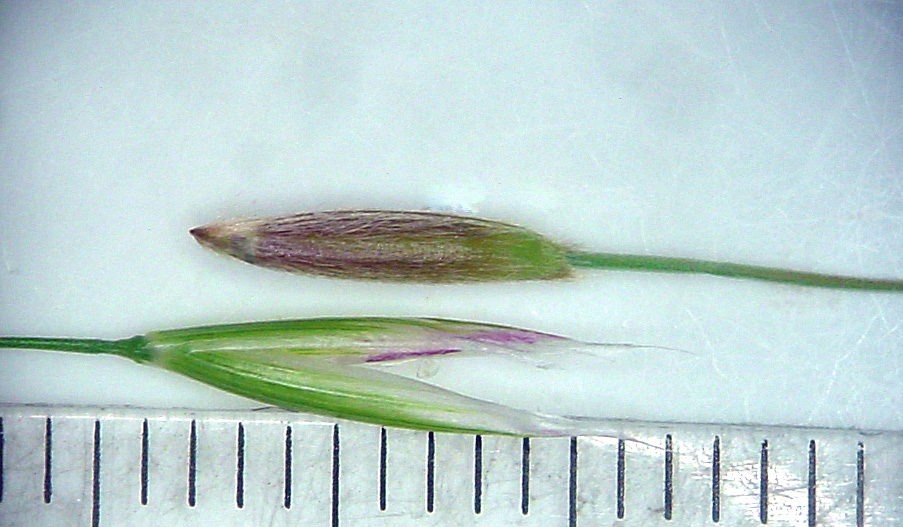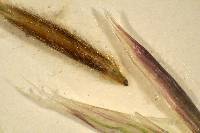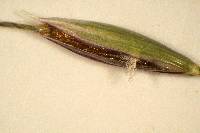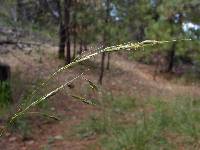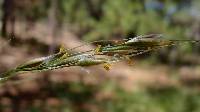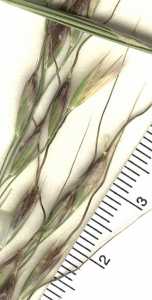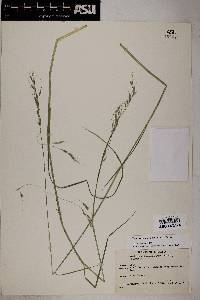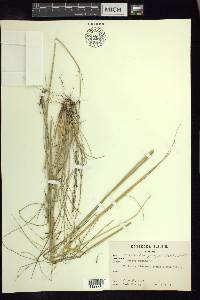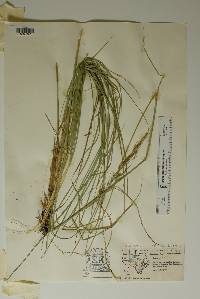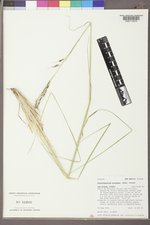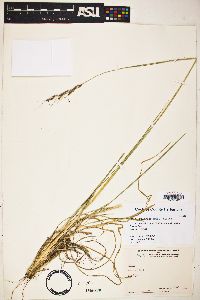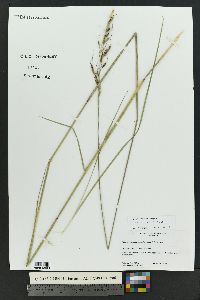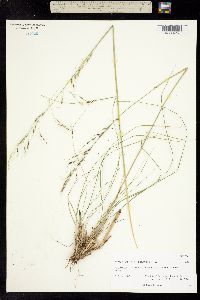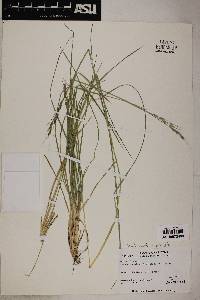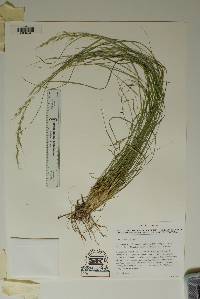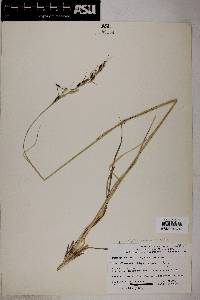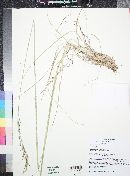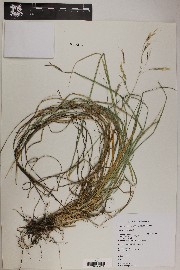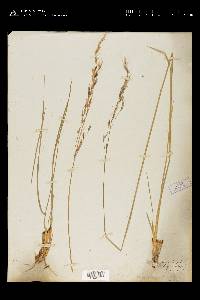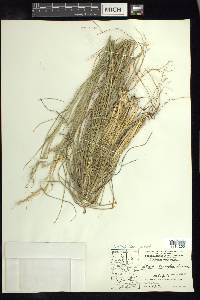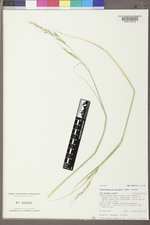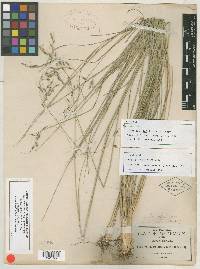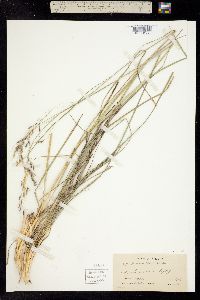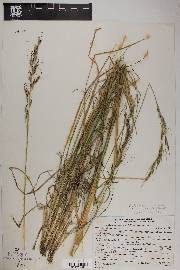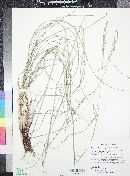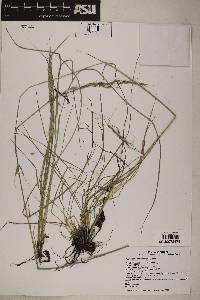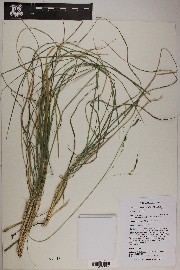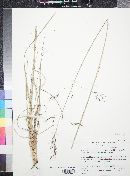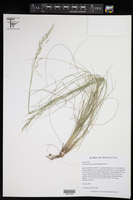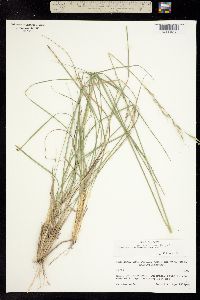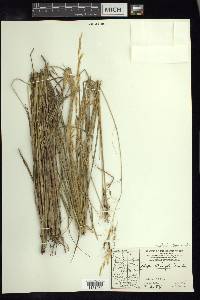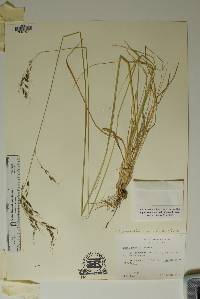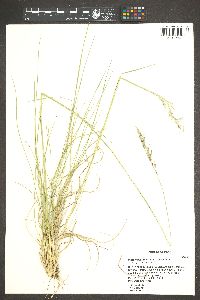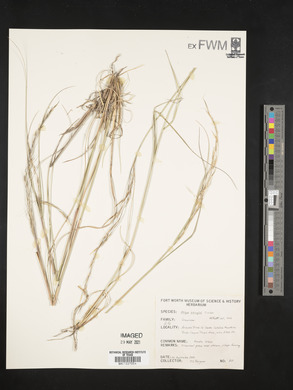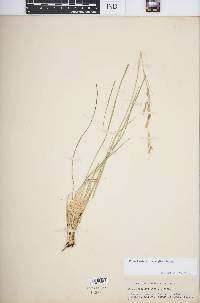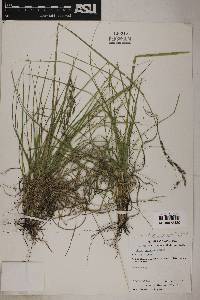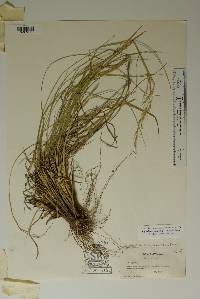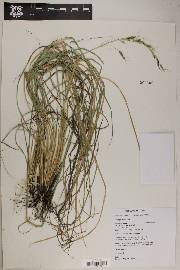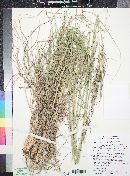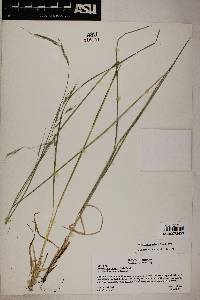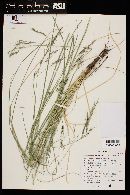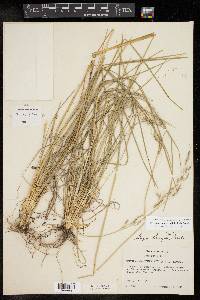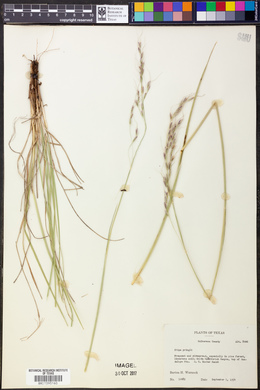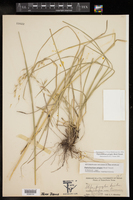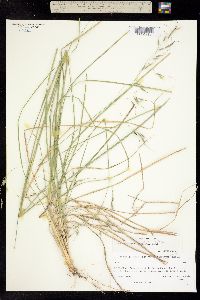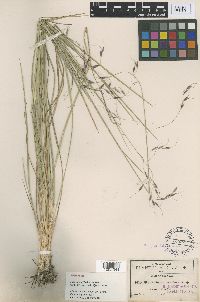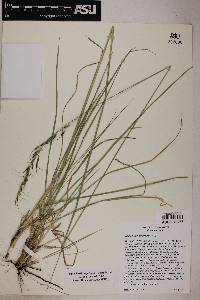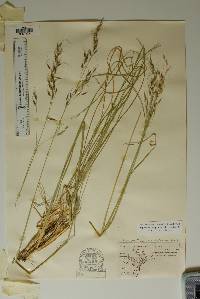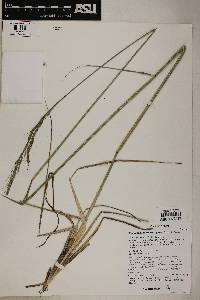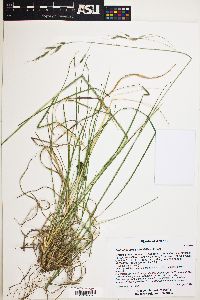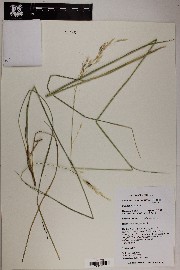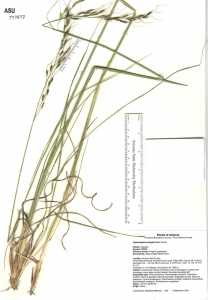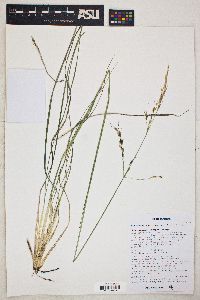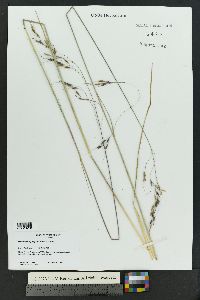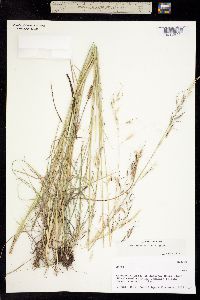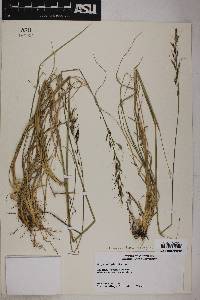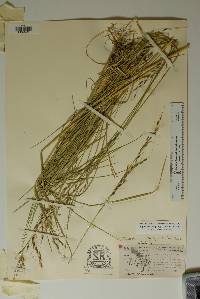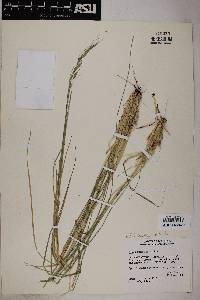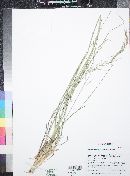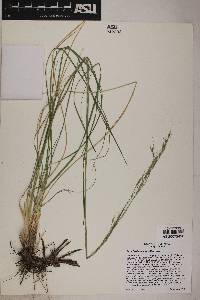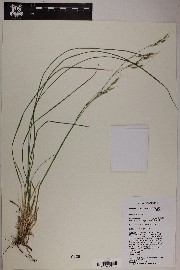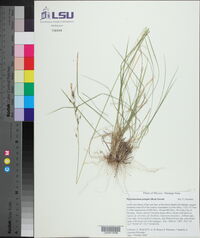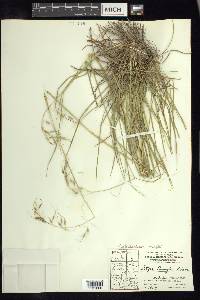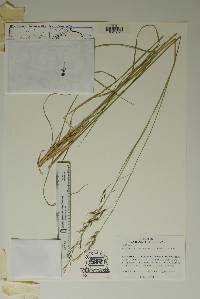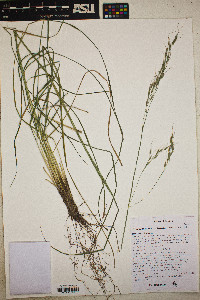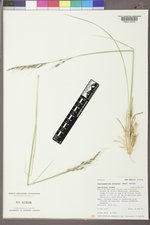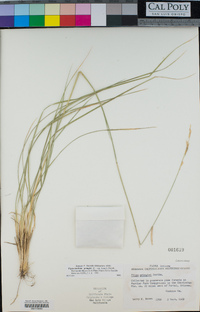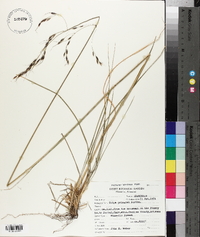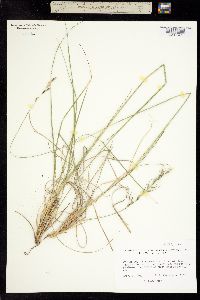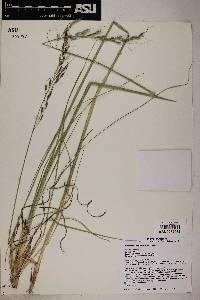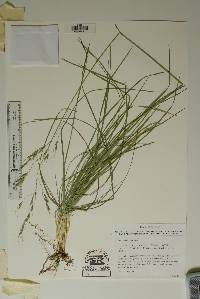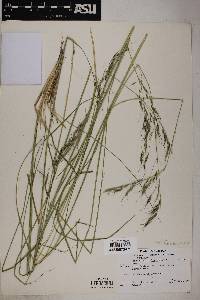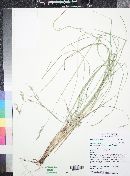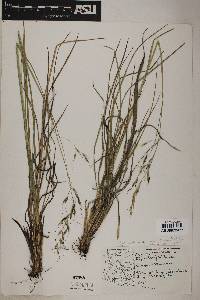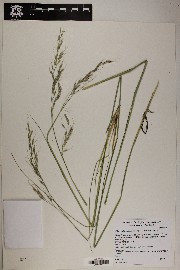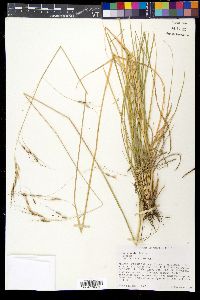
|
|
|
|
Family: Poaceae
Pringle's Spear Grass, more...Pringle's speargrass, pringle needlegrass, Pringle speargrass, Pringle's Speargrass
[Oryzopsis erecta Beal, moreStipa pringlei (Beal) Scribn.] |
Culms 50-125 cm, mostly glabrous, pubescent below the nodes; nodes 2-3, dark, glabrous or slightly pubescent. Sheaths smooth to scabrid-ulous; ligules of basal leaves 0.5-2.8 mm, truncate to rounded, of upper leaves 1-3.5 mm, rounded to acute; blades 10-30 cm long, 1-3.5 mm wide, 3-5-veined, abaxial surfaces glabrous, smooth, adaxial surfaces smooth or scabrous over the veins, margins smooth or scabrous. Panicles 6-20 cm, open, with 10-25 spikelets; branches ascending, flexuous; pedicels to 1 mm, flattened, hispid. Glumes subequal, 9-12 mm long, 2.5-3.5 mm wide; lower glumes 5-7-veined; upper glumes 7-veined; florets 6.5-10 mm long, 1.5-2.1 mm thick, terete to somewhat laterally compressed; calluses 0.6-1.9 mm, blunt to acute, strigose; lemmas golden brown to dark brown at maturity, shiny or not, smooth to spiny-tuberculate distally or for almost their entire length, pubescent, hairs tawny to golden brown, evenly distributed or somewhat more abundant on the basal 1/2, apices tapering to the crown; crowns 0.5-0.6 mm, inconspicuous, straight, hairy, hairs 0.5-1 mm; awns 19-27(35) mm, persistent, twice-geniculate, sometimes inconspicuously so; paleas 6.3-9.5 mm; lodicules 2, 1-1.5 mm, acute; anthers 3.5-5.5 mm, sometimes penicillate. Caryopses about 7 mm, fusiform. 2n = 42. Piptochaetium pringlei grows in oak woodlands, often on rocky soils, in the southwestern United States and northwestern Mexico. It is often confused with P. fimbriatum; it differs from that species in having longer florets and sharper calluses. Piptochaetium pringlei is a tuft grass with one floret per spikelet. The glumes totally enclose the floret and the there is disarticulation above the glumes. The glumes are about 10mm long, compared to glumes about 5mm long in Piptochaetium fimbriatum. There is an awn that is about 1-3 cm long. The inflorescence is a panicle. FNA 2007 Common Name: Pringle's speargrass Duration: Perennial Nativity: Native Lifeform: Graminoid General: Perennial bunch grass with stems 50-125 cm, mostly glabrous and pubescent below the 2-3 nodes, which are dark, glabrous and slightly pubescent. Vegetative: Blades 10-30 cm long, 1-3.5 mm wide, involute, 3-5 veined, with under surfaces glabrous, upper surfaces smooth to scabrous over veins, margins smooth or scabrous, ligules 0.5-3 mm truncate to rounded, slightly larger in upper leaves. Inflorescence: Panicles 6-20 cm, open with 10-25 spikelets branches ascending, flexuous, pedicels to 1 mm, flattened; glumes subequal 9-12 mm long, 2.5-3.5 mm wide, lower glumes 5-7 veined, upper glumes 7-veined, florets 6.5-10 mm long, 1.5-2 mm thick, terete to laterally compressed; calluses blunt to acute; lemmas golden brown to dark brown, pubescent with tawny to golden brown hairs, evenly distributed with persistent awns 19-27 mm, twice geniculate. Ecology: Found in rocky soils in oak woodlands from 3,500-10,000 ft (1067-3048 m); flowers July-October. Notes: Often confused with P. fimbriatum, differs in that this species has longer florets and sharper calluses. Ethnobotany: Unknown Etymology: Piptochaetium is from Greek pipto, to fall and chaite, for bristle or long hair, while pringlei is named for Cyrus Guernsey Pringle (1838-1911) a Quaker and plant collector for Asa Gray in the southwest in the 1880s. Synonyms: Stipa pringlei Editor: SBuckley, 2010 |

